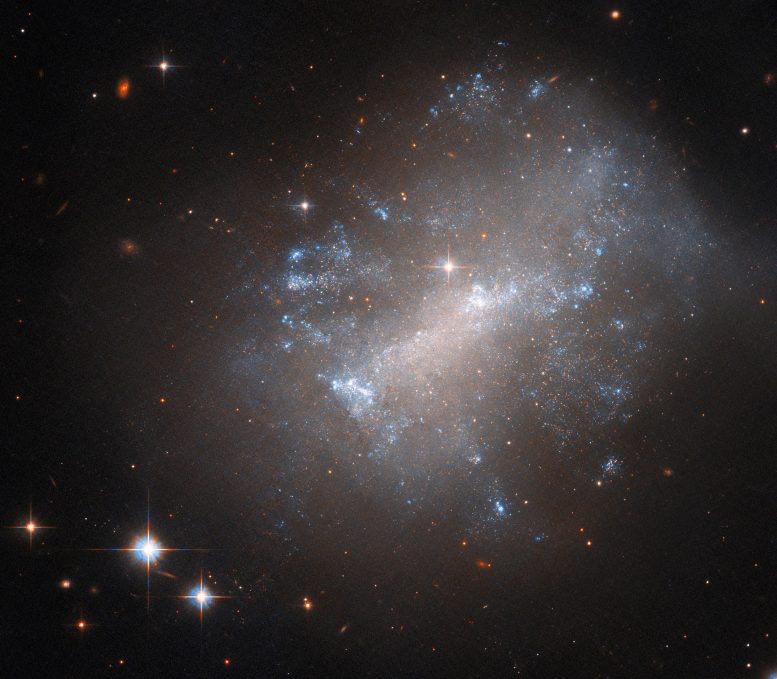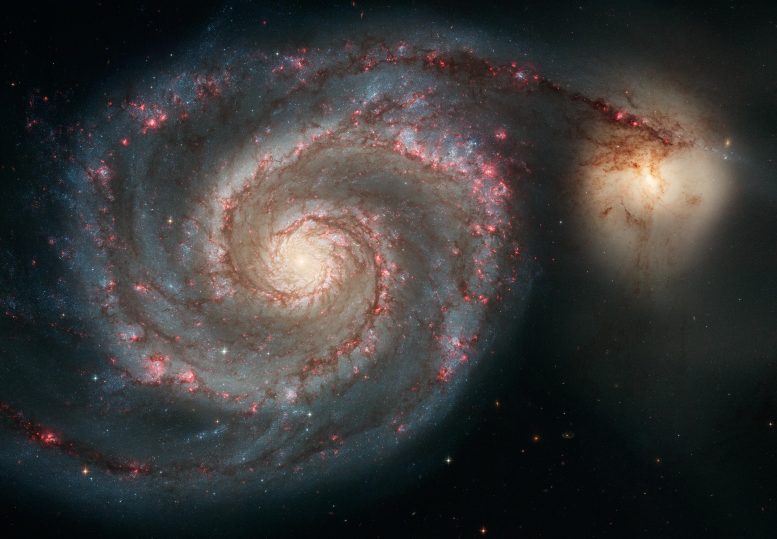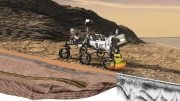
NASA/ESA Hubble Space Telescope image of galaxy NGC 7292, located about 44 million light-years from Earth in the Pegasus constellation. Credit: ESA/Hubble & NASA, C. Kilpatrick
Hubble Space Telescope imaged the irregular, faint galaxy NGC 7292 in the Pegasus constellation, noted for its stretched-out core and classification as a low surface brightness galaxy. The study focuses on the aftermath of its supernova, SN 1964H, to better understand Type II supernovae and the potential surviving stellar companions.
The galaxy NGC 7292 billows across this image from the Hubble Space Telescope, accompanied by a handful of bright stars and the indistinct smudges of extremely distant galaxies in the background. It lies around 44 million light-years from Earth in the constellation Pegasus.
This slightly disheveled galaxy is irregular, meaning that it lacks the distinct spiral arms of galaxies like the Whirlpool Galaxy (see image below) or the smooth elliptical shape of galaxies like Messier 59. Unusually, its core is stretched out into a distinct bar, a feature seen in many spiral galaxies. Alongside its hazy shape, NGC 7292 is remarkably faint. As a result, astronomers classify NGC 7292 as a low surface brightness galaxy, barely distinguishable against the backdrop of the night sky. Such galaxies are typically dominated by gas and dark matter rather than stars.

The graceful, winding arms of the majestic spiral galaxy M51 (NGC 5194) appear like a grand spiral staircase sweeping through space. They are actually long lanes of stars and gas laced with dust. Credit: NASA, ESA, S. Beckwith (STScI), and The Hubble Heritage Team (STScI/AURA)
Astronomers directed Hubble to inspect NGC 7292 during an observational campaign studying the aftermath of Type II supernovae. These colossal explosions happen when a massive star collapses and then violently rebounds in a catastrophic explosion that tears the star apart. Astronomers hope to learn more about the diversity of Type II supernovae they have observed by scrutinizing the aftermath and remaining nearby stars of a large sample of historical Type II supernovae.
NGC 7292’s supernova was observed in 1964 and accordingly given the identifier SN 1964H. Studying the stellar neighborhood of SN 1964H helps astronomers estimate the initial mass of the star that went supernova, and could uncover surviving stellar companions that once shared a system with the star that would become SN 1964H.









Be the first to comment on "A Supernova Afterparty: Hubble Snaps Cosmic Disarray in the Heart of Pegasus"